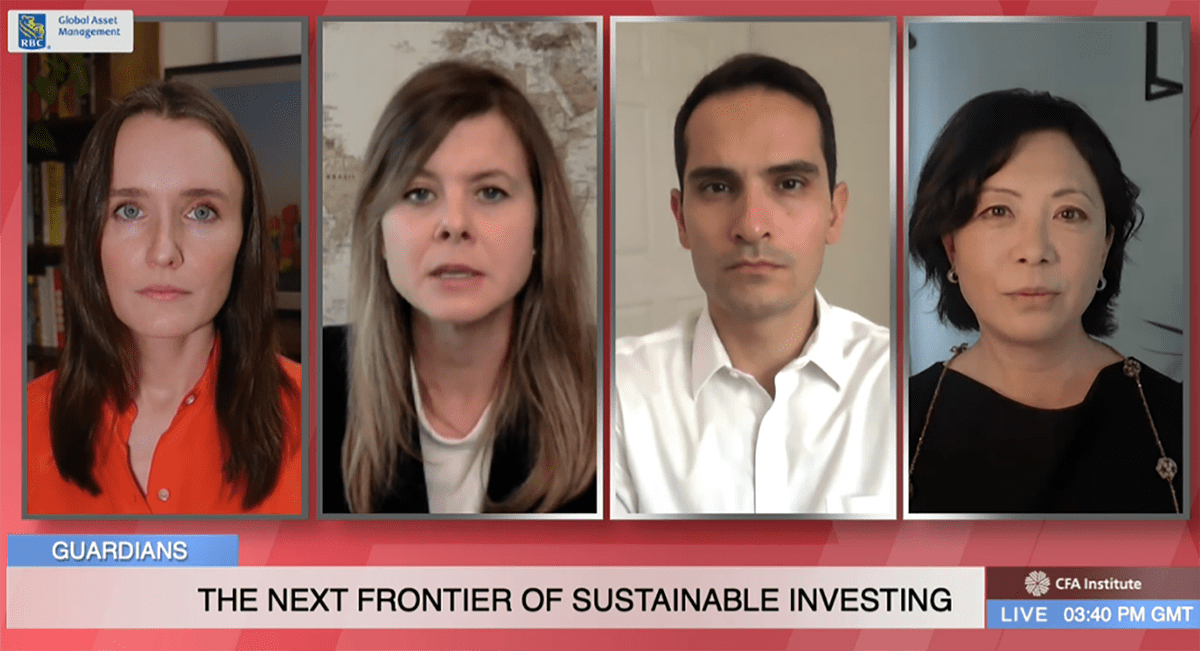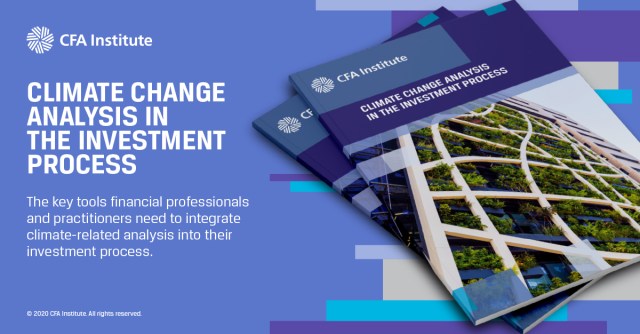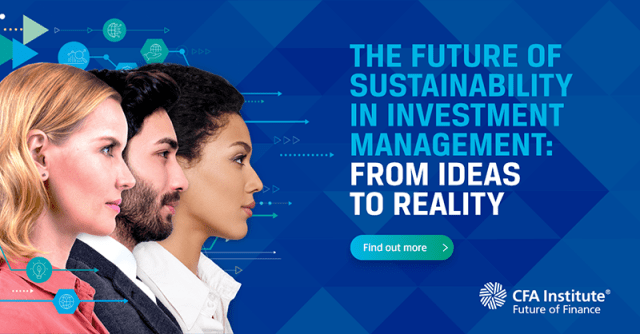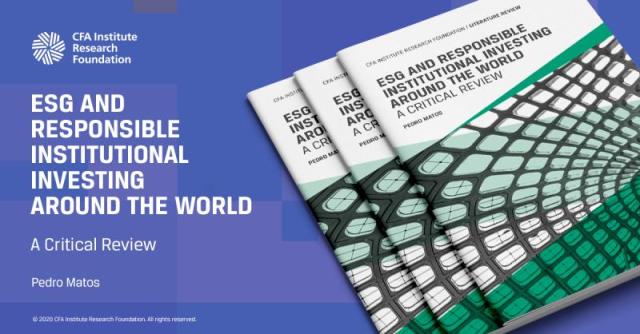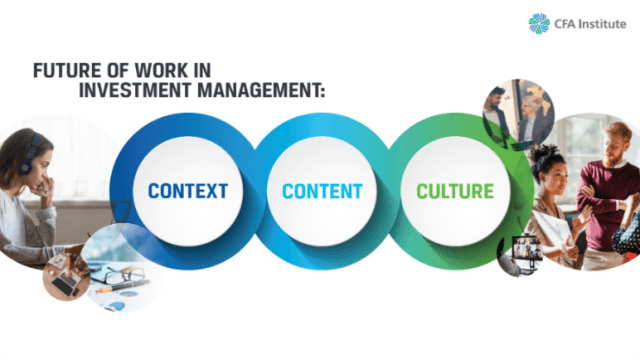[ad_1]
“When we’re talking about ESG in investment management, what are we talking about?” — George Serafeim
That question prefaced an expert panel discussion at the Alpha Summit by CFA Institute last month.
As Serafeim, the Charles M. Williams Professor of Business Administration at Harvard Business School, explained it, capitalism has created enormous wealth and lifted countless people out of poverty. But it faces two big challenges today: climate change and inequality.
“The wealth that has been created has been allocated very, very unequally,” he said. “As a result, many people have been left out.”
The ESG challenge then is to deliver economic prosperity and protect the environment while, in Serafeim’s words, “empowering people to participate in the economic value creation process.”
So what is the state of ESG analysis and how can investors both have an impact and invest with impact?
Serafeim and fellow panelists Melanie Adams, vice president and head of corporate governance and responsible investment at RBC Global Asset Management, and Purview Investments CEO Linda Zhang addressed these and other ESG- and sustainable investing-related questions with moderator Mary Childs of Planet Money.
What follows are some key highlights of their conversation.
The Material Factors
Materiality is a powerful force and the panelists said that focusing on material ESG factors can enhance returns. That means investors should include a materiality lens when conducting their assessments. But they must also be aware that the materiality lens differs from one sector to the next.
“Materiality means that the ESG factor is going to have an impact on the financial performance of the company,” Adams said. “This depends on the industry. If you’re looking at financial institutions, of course, cybersecurity would be extremely material, not so much, perhaps, for a food and beverage company.”
What benefits does materiality bring?
“Elevating the financial materiality of ESG issues is a huge mechanism for change,” Serafeim said. Once something becomes material, it is measured and C-suites and boards manage to it. Why? Because once it’s measured, executive comp is tied to it. And that’s becoming the case with material ESG metrics. This will help investors better manage risks and opportunities.
Still ESG data has a long way to go. Reliable, actionable ESG metrics require quality data, and though strides have been made, it just isn’t there yet.
“The data has improved a lot,” Serafeim said. “But at the same time, it’s not very comparable, it’s not very timely. In many cases, there is a lot of noise instead of signal.”
Over time, society-relevant ESG issues will become business relevant, according to the panelists. Different issues will have different levels of materiality. For example, the tech sector’s carbon emissions profile is not the same as that of other industries. Its products do not produce or use emissions, but its data centers are energy intensive and staff members may leave big carbon footprints when all their travel is added up.
Divestment
What about divestment? Did panelists think it was a good idea to screen out or walk away from companies that don’t make the ESG grade?
All agreed that engagement is preferable to divestment and should always be the first step when working with companies. By effectively breaking ties, investors have no voice to influence the firm. As a starting point, panelists encouraged investors to engage with all their companies on their net zero goals.
“We know that fossil fuels will be part of our energy mix for likely the next 10 years,” Adams said. “And so from our perspective, it’s more valuable for us to be at the table with companies that are thinking about how they will transition to a low carbon economy.”
The panelists also stressed that engagement does not equal acquiescence. Effective engagement requires teeth. Investors need to set milestones and benchmarks over time that outline what they expect companies to accomplish. Greenwashing is easy: Any company can talk the talk. But if they aren’t backing that up with concrete actions, then investors may be exposing themselves to undue risk and should be prepared to walk away.
Disclosure Standards
When the discussion turned to the state of disclosure standards, the panelists agreed that there is currently a movement toward global standards with SASB, IFRS, and TCFD, among others, leading the way. Impact standards are not here yet, however, and are still in their nascent stage.
For investors to have an impact, they will need to align their portfolios with the big global challenges for two reasons, according to the panelists: First, in a human-capital-intensive economy, ESG strategies are critical. Second, we are “investment consumers.”
“We can align our consumption with our values,” Serafeim said. “This is another mega trend that I think we will be observing over the next two to three decades.”
As the barriers to entry are removed, everyone is becoming an investor. Currently, more than half of the US population invests. So there is ample opportunity to select securities with an eye towards where we want the world to go. If we want to address climate risk, safeguard biodiversity, or reduce inequality, we should invest that way. ESG is strategically relevant, and to be competitive companies need to address all three of these areas. As investors, we can help deliver that message.
Carbon Offsets
To mitigate climate change, carbon offsets can be a useful tool.
“Many corporations are embracing both actively reducing their emissions, reducing their waste, improving usage efficiency, as well as buying credit,” Zhang observed. “The first and largest credit market where you can trade emission allowances is in Europe, right? If you look at the price of emission per metric ton of CO2, at the start of the year, the price was $36, or $38, and now it’s over $56.”
But again, the nature of the data is important. Companies need to look at the quality of offsets, to make sure they are audited and retired. It is tough to meet targets without doing both.
So what advice did the panelists have for those looking to enter the impact investing field?
One key recommendation is to steer your career to where the growth is going to be. Climate change and the threat of it will change the economy over the coming decades. Some sectors will be completely disrupted, and wherever there is disruption is where the alpha opportunity exists. It will be an exciting environment, but passion alone will not be sufficient for success. Success will require technical skill.
But those technical skills can take on many forms. ESG and sustainable investing is not a one-size-fits-all environment.
“One of the biggest things that I think about is just how broad the space of ESG is, how many different metrics there are, and we’re very focused right now on climate change,” Adams observed. “But there are also other ESG metrics that we also need to be focusing on.”
She pointed to cybersecurity as a key consideration that has only recently begun to receive the attention it deserves. And Adams stressed the importance of getting the third letter right.
“You just can’t manage your E and S properly if you don’t have appropriate governance in place,” she said.
As a group though, the panel struck a hopeful, optimistic tone despite the challenges.
“Humanity is facing incredible opportunity right now,” Zhang observed. “We are at the dawn of a new industrial revolution, right, and this happens to be a green one.”
If you liked this post, don’t forget to subscribe to the Enterprising Investor.
All posts are the opinion of the author. As such, they should not be construed as investment advice, nor do the opinions expressed necessarily reflect the views of CFA Institute or the author’s employer.
Image Credit: © Getty Images / guvendemir
Professional Learning for CFA Institute Members
CFA Institute members are empowered to self-determine and self-report professional learning (PL) credits earned, including content on Enterprising Investor. Members can record credits easily using their online PL tracker.
[ad_2]
Image and article originally from blogs.cfainstitute.org. Read the original article here.

